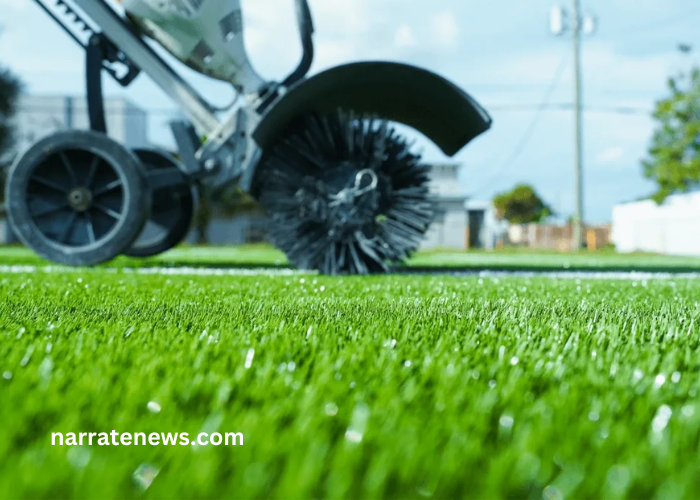
Top turf
In recent years, artificial grass, also known as synthetic turf, has surged in popularity as a versatile and low-maintenance alternative to natural grass. From residential lawns to professional sports fields, artificial turf has become a go-to choice for homeowners, businesses, and municipalities seeking lush, green landscapes without the hassle of traditional lawn care. In this comprehensive guide, we delve into the world of artificial grass, exploring its benefits, applications, installation process, maintenance requirements, and environmental impact.
The Rise of Artificial Grass:
Artificial grass has come a long way since its inception, evolving from its early days as a utilitarian surface for sports fields to a high-quality landscaping solution that rivals the look and feel of natural grass. Advances in technology and manufacturing techniques have transformed artificial turf into a realistic and durable alternative that offers numerous advantages over its natural counterpart.
Benefits of Artificial Grass:
One of the primary benefits of artificial grass is its low maintenance requirements. Unlike natural grass, which requires regular watering, mowing, and fertilizing to maintain its appearance, artificial turf requires minimal upkeep. It does not need to be watered, mowed, or treated with chemicals, making it an eco-friendly and cost-effective choice for homeowners and businesses alike.
Additionally, artificial grass offers excellent durability and resilience, making it ideal for high-traffic areas such as sports fields, playgrounds, and commercial landscapes. It can withstand heavy use and inclement weather conditions without deteriorating or losing its lush appearance, ensuring a consistently attractive and functional outdoor space year-round.
Applications of Artificial Grass:
Artificial grass is incredibly versatile and can be used in a wide range of applications. In residential settings, it is commonly used for landscaping, backyard putting greens, pet areas, and rooftop gardens. Its natural look and feel make it a popular choice for homeowners who want to enjoy a green lawn without the hassle of maintenance.
In commercial and public spaces, artificial turf is used for sports fields, playgrounds, parks, and recreational areas. Its durability, safety, and consistency make it an ideal surface for sports such as soccer, football, and baseball, providing athletes with a reliable playing field that minimizes the risk of injury.
Installation Process:
The installation process for artificial grass typically involves several steps, including site preparation, base installation, turf installation, and finishing touches. First, the existing turf or soil is removed, and the area is leveled and compacted to create a stable base. Next, a layer of crushed stone or gravel is added to provide drainage and support for the turf.
Once the base is prepared, the artificial grass is laid out and secured in place using adhesive or nails. Seams are carefully joined, and the edges are trimmed to fit the contours of the space. Finally, infill material such as sand or rubber is added to provide weight and stability to the turf.
Maintenance Requirements:
One of the key advantages of artificial grass is its minimal maintenance requirements. Unlike natural grass, which requires regular watering, mowing, and fertilizing, artificial turf only needs occasional brushing and rinsing to remove debris and maintain its appearance. Additionally, pet owners can easily clean up pet waste with a hose or mild detergent, as artificial grass is non-absorbent and easy to clean.
Environmental Impact:
While artificial grass offers numerous benefits, it is not without its environmental considerations. The manufacturing process for synthetic turf involves the use of petroleum-based materials and chemicals, which can have a negative impact on the environment. Additionally, artificial turf does not provide the same environmental benefits as natural grass, such as oxygen production, carbon sequestration, and soil erosion control.
However, some manufacturers are taking steps to mitigate the environmental impact of artificial grass by using recycled materials and incorporating sustainable practices into their production processes. Additionally, advancements in technology are leading to the development of more eco-friendly alternatives to traditional synthetic turf.
Conclusion:
In conclusion, artificial grass offers a host of benefits as a versatile and low-maintenance landscaping solution. From residential lawns to sports fields and commercial landscapes, artificial turf provides an attractive, durable, and cost-effective alternative to natural grass. While it may not be without its environmental considerations, the many advantages of artificial grass make it a top choice for homeowners, businesses, and municipalities looking to enhance their outdoor spaces.


